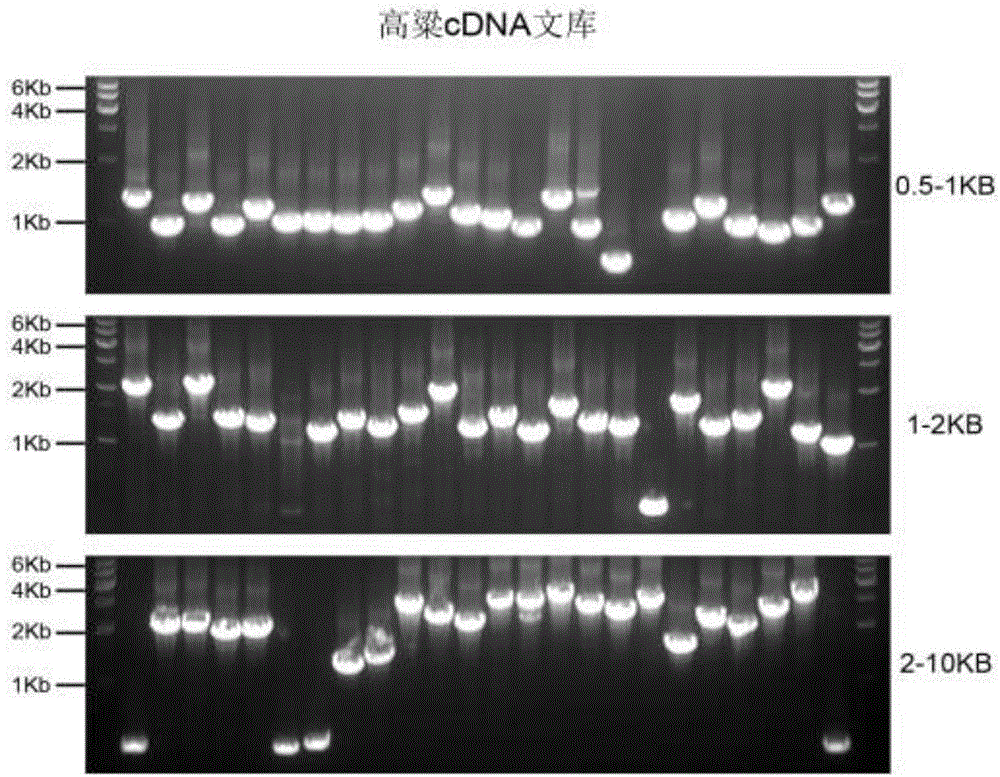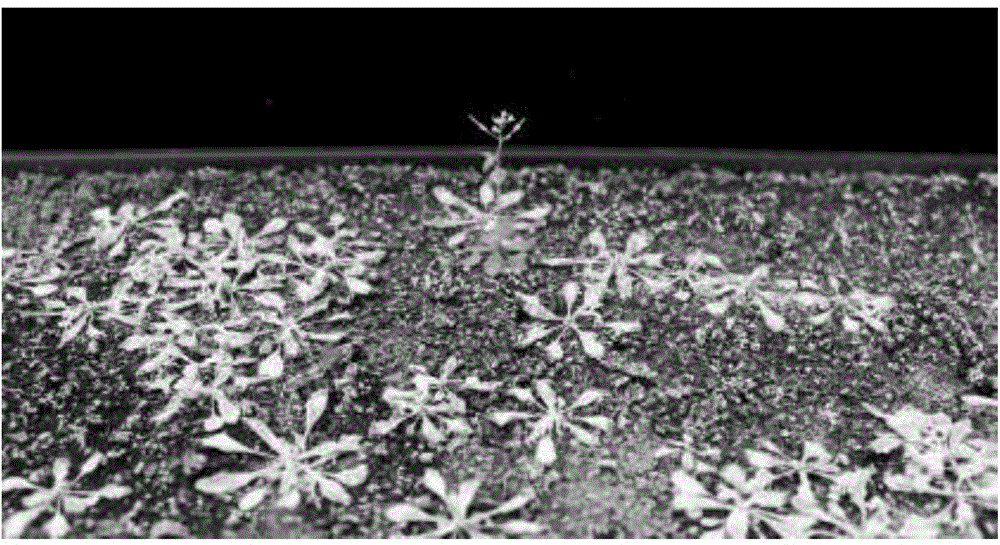Abiotic stress response related protein, and encoding gene and application thereof
A biological, protein technology, applied in the field of protein
- Summary
- Abstract
- Description
- Claims
- Application Information
AI Technical Summary
Problems solved by technology
Method used
Image
Examples
no. 1 example
[0068] The first embodiment, construction of sorghum full-length cDNA library
[0069] Take salt-treated sorghum tissue to prepare total RNA, and after mRNA separation, dephosphorylation, decapping, and CAP Tag connection, the first strand of cDNA is synthesized from the purified mRNA, and then double-stranded DNA is synthesized. After digestion, the fragments were fractionated by agarose gel electrophoresis, and the fragments were harvested according to the following fragment sizes: 2-12kb, 1-2kb, 0.5-1kb, figure 1 Shown (Spe: spectinomycin gene; RB: right border; prCaMV35s: cauliflower virus promoter (SEQ ID NO: 3); Sb: sorghum library gene; Nos: the terminator of nopaline synthase gene (SEQ ID NO: 4); Bar: glufosinate resistance gene (SEQ ID NO: 5); LB: left border).
[0070] Then, the recombinant expression vector mixture was transformed into Escherichia coli XL1-Blue competent cells by electroshock method. The electric shock conditions were: 50 μL E. coli XL1-Blue compete...
no. 2 example
[0071] The second embodiment, Arabidopsis transformation of sorghum full-length cDNA library
[0072] 1. Extraction of full-length cDNA library plasmid
[0073] Scrape all the plaques of the above-mentioned sorghum library and culture them in 500 mL LB liquid medium containing spectinomycin (100 mg / L) at 37°C for 30 min. The plasmid was extracted by alkaline method in small tubes: the bacterial solution was centrifuged at 12000 rpm for 1 min, the supernatant was removed, and 100 μL of ice-cold solution I (25 mM Tris-HCl, 10 mM EDTA (ethylenediaminetetraacetic acid) was used to precipitate the bacterial cells. 50mM glucose, pH8.0) suspension; add 200μL of newly prepared solution II (0.2M NaOH, 1% SDS (sodium dodecyl sulfate)), invert the tube 5 times, mix, put on ice for 3-5min; add 150 μL of ice-cold solution III (3M potassium acetate, 5M acetic acid), mixed thoroughly immediately, placed on ice for 5-10min; centrifuged at 4°C and 12000rpm for 5min, took an appropriate amount...
no. 3 example
[0081] The third embodiment, Arabidopsis screening of sorghum full-length cDNA library
[0082] Will T 1 Seeds were suspended in 0.1% agarose solution and stored at 4°C for 2 days. Mix horse manure with vermiculite and subirrigate with water until moist, allowing the soil mixture to drain for 24 hours. The pretreated seeds were sown on the soil mixture and covered with a moisture hood for 4 days. Make the seeds germinate and keep the light intensity at 120-150μmol / m at constant temperature (22°C) and constant humidity (40-50%) 2 Cultivated under long-day light conditions. When the Arabidopsis grew to 7 days, the non-transgenic Arabidopsis was killed by foliar spraying with Baoshida (Bayer) solution at a dilution ratio of 1:400. When the remaining transgenic Arabidopsis thaliana grows to 12-14 days, water it to saturation first, and then stop watering; when it grows to 18-20 days, start to measure the water content, and when the water content drops to 25-45%. The transgeni...
PUM
 Login to View More
Login to View More Abstract
Description
Claims
Application Information
 Login to View More
Login to View More - R&D
- Intellectual Property
- Life Sciences
- Materials
- Tech Scout
- Unparalleled Data Quality
- Higher Quality Content
- 60% Fewer Hallucinations
Browse by: Latest US Patents, China's latest patents, Technical Efficacy Thesaurus, Application Domain, Technology Topic, Popular Technical Reports.
© 2025 PatSnap. All rights reserved.Legal|Privacy policy|Modern Slavery Act Transparency Statement|Sitemap|About US| Contact US: help@patsnap.com



